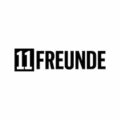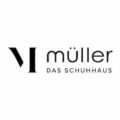Annoyance Factors in E-Commerce
Annoyance factors are abundantly present in e-commerce. It is not uncommon for visitors to leave the website because life – or even shopping – is made difficult for them. An often underestimated conversion killer is incorrect customer communication. A lot can be done wrong here, from too frequent communications to irrelevant content.
When is Communication Annoying?
Everyone knows it: popups that suddenly appear and offer no added value or impersonally worded emails that don’t fit to the recipient at all. This is annoying and leads to customer loss for 19%. Surveys confirm that advertising-heavy and intrusive communication is particularly annoying. The result: shopping cart abandonments, which could be prevented. Online merchants should thus choose other ways of communicating. A service-oriented approach is a good way to do this.
The Biggest Annoyance Factors in Communication
Relevance
Shop visitors are not interested in content that is irrelevant. That is why the message always has to offer added value, fit to the current situation and ideally be solution- or service-oriented.
Timing
Bad timing limits the UX. Good timing, on the other hand, is based on channel, intent and customer needs. It is important that the message does not interfere with the user’s shopping process.
Frequency
Too many communications do not have the desired effect and can quickly become annoying. Intelligent technologies are dynamic and remember which visitor received which notification at which time. This prevents the same or a similar message from appearing again.
Customer Preferences
If the customer wants fewer notifications, the online merchant must comply with this preference, not least for legal reasons. Opt-out functions offer quick and uncomplicated solutions in such cases.
Type of Communication
Nothing signals indifference as much as an unsuitable communication type. In order to demonstrate appreciation, you need an individually suitable form of communication. While some shop visitors would like to be addressed cordially, others prefer it to be businesslike.
Avoiding Annoyance Factors and Communicating in a Customer-Friendly Way
In the e-book “Annoyance Factor in E-Commerce” you will learn how to optimise communication and minimise annoyance factors. In addition, learn how to calculate the annoyance factor of emails and popups.

































